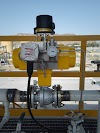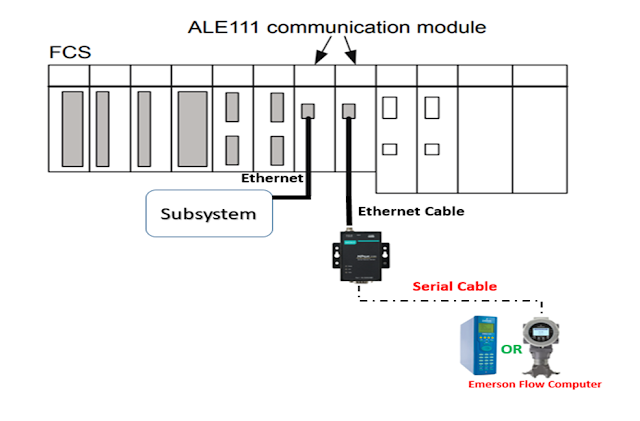What are the Design Basis Guidelines for an Oil & Gas Industrial Instrumentation Project
General Requirements
The instrumentation must
adhere to established engineering practices and procedures outlined in this
specification and any other pertinent specifications for the project.
Instruments must undergo review by the Company to ensure compatibility with the Project Specification in terms of design, operability, and maintenance. Only instruments with proven design must be used, emphasizing reliability and appropriate materials.
Process fluids, steam,
or water must not be directly measured in local control panels or the central
control room; instead, measured variables must be transmitted electronically.
For remote indication
and/or control, signals must be converted to electrical signals (4-20mA) at
24VDC for transmission; no pneumatic signals should be sent to the central
control room.
Unconventional or unique
instruments or instrumentation design practices should be avoided;
standardization should be maintained wherever possible.
All measuring
instruments should have over-range protection whenever feasible.
Instruments must be made
of high-quality materials and manufactured under recognized quality control
programs.
Instrumentation should be installed on skid modules whenever possible, including all necessary connections and wiring to junction boxes.
Instruments should be
pre-calibrated and function tested in the Vendor’s shop prior to export
packing; for PLC-controlled units, Factory Acceptance Testing must be
conducted, with the option for the Purchaser to witness at their own cost.
Preferably, PLCs should
be used in Vendor packages involving sequence and process control,
communicating with DCS and ESD systems via specified protocols.
Vendor-provided drawings
must accurately depict field instrumentation installation details, including a
Bill of Material, with each drawing representing typical installation details
for multiple tagged instruments.
All tube fittings must
be 316SS Swagelok or equivalent, with other bulk materials accurately described
in terms of material, size, pressure, and temperature ratings.
Flow and pressure
transmitters should be line-mounted whenever possible to minimize errors, but
accessibility must be ensured.
Instruments in vapor or
gas service should be mounted above the sensing point, while those in liquid
service should be mounted below; exceptions apply for pressure gauges.
Canopies must not be
provided for local control panels; sun shades must be provided for Analyzers
and RTU Panels.
When indoors, all vent
ports of instruments and regulators using instrument gas must be vented outside
the building.
Instruments, associated
components, and connections must be installed according to approved
installation drawings.
Local control pneumatic
instruments should generally have output signals of 3 to 15 psi; electro-pneumatic
devices should receive 4-20mA signals from the PLC system.
Instrumentation and
control systems should be designed for simplicity, reliability, and minimal
maintenance.
Field-mounted instrument housings and exposed parts must be weatherproof and explosion-proof where necessary.
All proposed plastic
components, along with toxicity and fire hazard details, must be specified in
the Vendor’s quotation.
The project piping
specification must determine process connection sizes, types, and ratings for
various instruments.
Special attention must
be given to material selection for instruments when dealing with highly
corrosive fluids or sour service.
All instrumentation and
control systems should be designed to operate in a fail-safe mode.
Instruments and
components must be carefully selected to suit internal fluid conditions and
environmental factors
Packaged supplies
must ensure instruments or their connections do not extend beyond the skid
limits.
Instrument parts
must withstand the corrosive properties of the process fluid they are exposed
to.
Seals and purges should
be employed as needed to guarantee reliable instrument performance.
Instruments must undergo
review by the Company to ensure compatibility with the Project Specification in
terms of design, operability, and maintenance. Only instruments with proven
design must be used, emphasizing reliability and appropriate materials.
Process fluids, steam,
or water must not be directly measured in local control panels or the central
control room; instead, measured variables must be transmitted electronically.
For remote indication
and/or control, signals must be converted to electrical signals (4-20mA) at
24VDC for transmission; no pneumatic signals should be sent to the central control
room.
Unconventional or unique instruments or instrumentation design practices should be avoided; standardization should be maintained wherever possible.
All measuring
instruments should have over-range protection whenever feasible.
Instruments must be made
of high-quality materials and manufactured under recognized quality control
programs.
Instrumentation should
be installed on skid modules whenever possible, including all necessary
connections and wiring to junction boxes.
Instruments should be
pre-calibrated and function tested in the Vendor’s shop prior to export
packing; for PLC-controlled units, Factory Acceptance Testing must be
conducted, with the option for the Purchaser to witness at their own cost.
Preferably, PLCs should
be used in Vendor packages involving sequence and process control,
communicating with DCS and ESD systems via specified protocols.
Vendor-provided drawings
must accurately depict field instrumentation installation details, including a
Bill of Material, with each drawing representing typical installation details
for multiple tagged instruments.
All tube fittings must
be 316SS Swagelok or equivalent, with other bulk materials accurately described
in terms of material, size, pressure, and temperature ratings.
Flow and pressure
transmitters should be line-mounted whenever possible to minimize errors, but
accessibility must be ensured.
Instruments in vapor or
gas service should be mounted above the sensing point, while those in liquid
service should be mounted below; exceptions apply for pressure gauges.
Canopies must not be
provided for local control panels; sun shades must be provided for Analyzers
and RTU Panels.
When indoors, all vent
ports of instruments and regulators using instrument gas must be vented outside
the building.
Instruments, associated
components, and connections must be installed according to approved
installation drawings.
Local control pneumatic instruments should generally have output signals of 3 to 15 psi; electro-pneumatic devices should receive 4-20mA signals from the PLC system.
Instrumentation and
control systems should be designed for simplicity, reliability, and minimal
maintenance.
Field-mounted instrument
housings and exposed parts must be weatherproof and explosion-proof where
necessary.
All proposed plastic
components, along with toxicity and fire hazard details, must be specified in
the Vendor’s quotation.
The project piping
specification must determine process connection sizes, types, and ratings for
various instruments.
Special attention must
be given to material selection for instruments when dealing with highly
corrosive fluids or sour service.
All instrumentation and
control systems should be designed to operate in a fail-safe mode.
Instruments provided
with packaged equipment must be identified on mechanical flow sheets or
P&IDs and consistent with project requirements.
Instruments and components must be carefully selected to suit internal fluid conditions and environmental factors.
Packaged supplies must ensure instruments or their connections do not extend beyond the skid limits.
Instrument parts must withstand the corrosive properties of the process fluid they are exposed to.
Seals and purges should be employed as needed to guarantee reliable instrument performance.










0 Comments